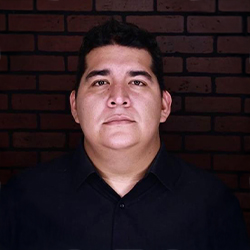Math and Physics for NDT: Liquid Penetrant Testing 29 September 2025
Build essential math and physics skills tailored for penetrant testing. Strengthen unit conversions, trigonometry, and logarithms, while mastering PT-specific concepts like liquid wetting, cleaning methods, and UV light compliance.
Member: $200
Credit Info
- Contact Hours: 4
- IACET CEUs: N/A
- Valid for ASNT Level III recertification: Yes
Course Overview
This course provides a comprehensive foundation in mathematical principles essential for PT applications.
It is split into two sections, the first is a pre-requisite section where learners will strengthen essential mathematical skills by mastering numerical formatting, unit conversions, exponents, and logarithms while applying the order of operations to solve equations. You will also explore trigonometric principles, including right triangle properties, Pythagorean theorem, and sine functions, to build a strong foundation for technical and engineering applications.
The second part of the course relates to math and physics concepts that PT technicians may encounter. Learners will learn to accurately convert between SI and traditional (imperial) units for pressure, volume, viscosity, and porosity. You will evaluate pre-cleaning methods for penetrant testing by analyzing the drawbacks of abrasive cleaning techniques and understanding abrasive particle size specifications. Additionally, you will explore liquid wetting and surface interaction by calculating wetting ability, identifying conditions for liquid spreading, and understanding the relationship between wetting ability and contact angle. Finally, you will ensure compliance with fluorescent penetrant testing requirements by specifying minimum UV light levels and maximum allowable ambient light conditions.
*Students will need access to a Casio FX-260 Solar or other non-programmable scientific calculator for use during the course*
Upon Completion, Learners Will Be Able To:
- Demonstrate proper formatting of digit strings according to IEEE style by replacing commas with spaces where applicable
- Apply the order of operations (PEMDAS) to solve equations involving parentheses, exponents, multiplication, division, addition, and subtraction
- Identify and explain the seven base units of the SI system and describe how other SI units are derived
- Convert between traditional and SI units accurately using appropriate conversion factors.
- Utilize exponents to represent multiples and submultiples of 10 and perform multiplication and division with exponents
- Apply logarithmic principles to find the logarithm of a number with respect to a base, multiply and divide using logarithms, and determine logarithms of square roots
- Analyze right triangle properties by identifying the hypotenuse, adjacent, and opposite sides based on given angles
- Calculate missing sides of a right triangle using the Pythagorean theorem
- Apply trigonometric ratios (SOH-CAH-TOA) to determine the sine, cosine, and tangent of angles in right triangles
- Utilize inverse trigonometric functions (arcsin, arccos, arctan) to find unknown angles in a right triangle
- Graph sine functions based on given amplitude and period to visualize trigonometric waveforms
- Demonstrate proficiency in unit conversions and measurements by specifying and converting between SI and traditional (imperial) units for pressure, volume, viscosity, and porosity
- Evaluate pre-cleaning methods for penetrant testing (PT) by analyzing the disadvantages of abrasive cleaning techniques and explaining how abrasive particle size is specified
- Apply principles of liquid wetting and surface interaction by calculating wetting ability, identifying necessary conditions for liquid spreading, and defining the relationship between wetting ability and contact angle
- Ensure compliance with ultraviolet (UV) and ambient light requirements in fluorescent penetrant testing by specifying minimum UV light levels and maximum allowable ambient light conditions
Meet the Instructor

Jorge Reyna
Jorge is a seasoned NDT, welding, and coatings inspection professional with extensive field experience across Mexico, Panama, Ecuador, and China. He holds ASNT Level III certifications in multiple methods, is an AMPP Master Coatings Inspector, AWS SCWI, and ACI Certified Concrete Field Testing Inspector. Fluent in Norwegian and Italian, Jorge brings global expertise to every project. Since 2013, he has managed his own inspection firm, JRSA Inspections, based in Monterrey, Mexico.
Questions? Contact us at education@asnt.org